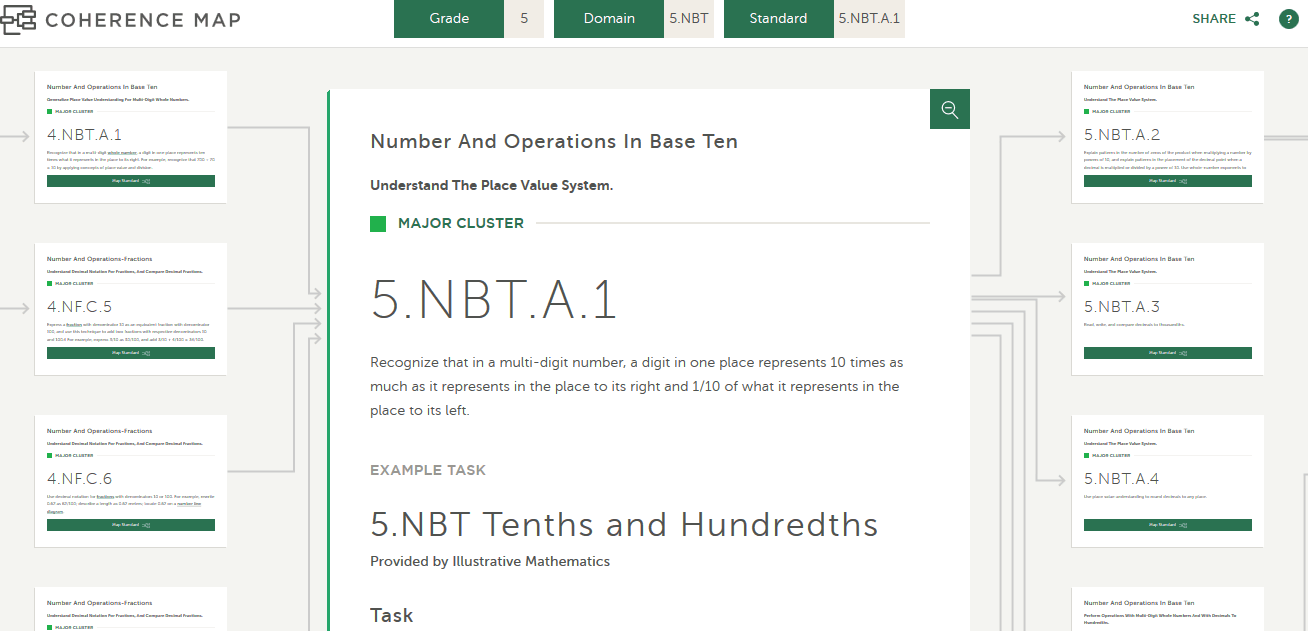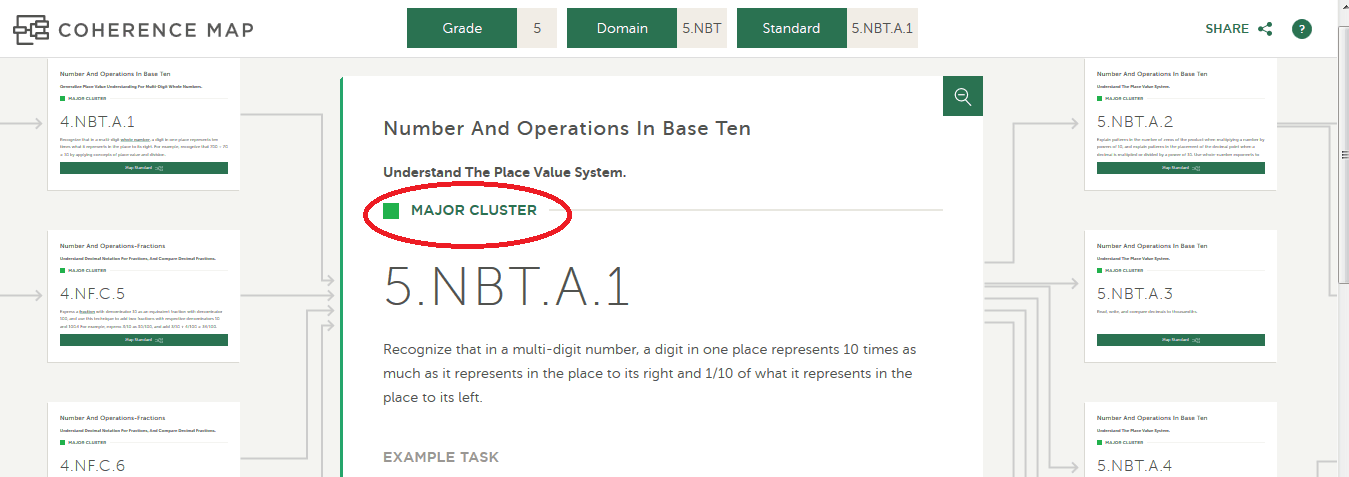The coherent structure of the Common Core State Standards for Mathematics is a reflection of the fact that mathematical concepts are inherently connected to one another. Unfortunately, in the past, math has frequently been treated like a list of discrete topics. How many times have students heard something like, “On Friday we’ll be done with fractions; next week we’ll be starting…” When students don’t make the connections between previous knowledge and new material, learning and retaining math becomes a lot harder. When teachers (and the materials they use) guide students to use their previous knowledge, they can tackle new material from a place of strength, employing skills they’ve already mastered.
Educators are facing two difficult realities, however. The first is that many students have gaps in their math knowledge: they haven’t yet mastered the prerequisite skills from previous grades that will enable them to learn on-grade-level material. The second is that many instructional materials do not sequence content in a way that takes advantage of the coherent structure of the standards. The materials may introduce concepts too early or too late, they may superficially touch on the same concepts year after year, and they may fail to explicitly show students how the new material connects to previous concepts.
The Coherence Map can help educators address all of these issues. The Coherence Map is an interactive, digital tool (based on Jason Zimba’s Wiring Diagram) that allows users to search for a standard and then instantly generate a map of the connected standards. The tool also includes math tasks for standards that exemplify how teachers might instruct students on the standard. For educators looking to learn more, text from the Progressions Documents is included to provide additional information on the standards.
In classrooms where students are struggling to master a particular standard, teachers can use the Coherence Map to identify gaps in students’ knowledge by tracing the connections back within the same grade or to standards from previous grades. They can address these gaps by supplementing their on-grade-level content with instruction on prerequisite standards using the math tasks included in the Coherence Map.
Teachers can also use the Coherence Map to enhance their lesson planning and instruction. For instance, after looking at the Coherence Map, a teacher may realize that his or her current textbook introduces a particular concept too early, and it would make more sense to teach other units first, to allow students to build a stronger foundation before tackling a new concept. Or they may see that their textbook introduces concepts discretely, without showing students how the new material connects to previous concepts. For this, teachers can make use of the included math tasks and design their lessons in a way that clearly reminds students how the new concept is a continuation of what they already know.
The Coherence Map also shows which standards are considered Major, Supporting, or Additional, which can help educators determine where to spend valuable class time. Teachers will want to spend more time on standards that constitute the Major Work of the Grade, and they’ll understand why after looking at the Coherence Map: the Major Work of the Grade connects to so many other concepts and skills.
During this time of transition, while curricular options slowly improve to reflect the Standards, teachers do not need to be restricted by their textbooks. Small changes that make connections clear for students can lead to big results long term.



















I agree before students go to next level skill, they use prior knowledge to incorporate new learning skill.